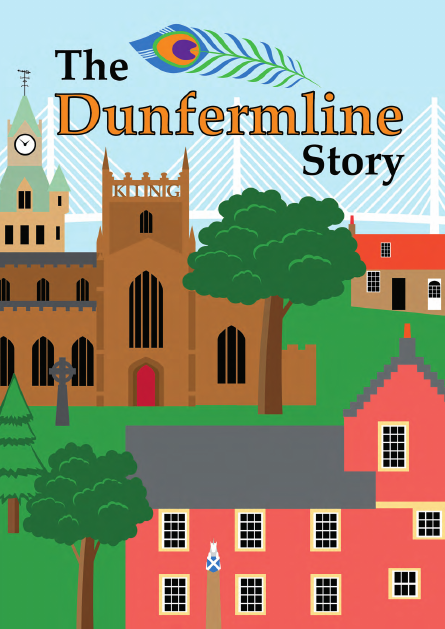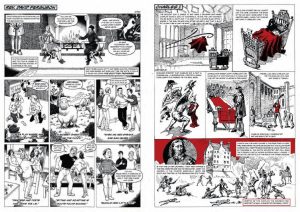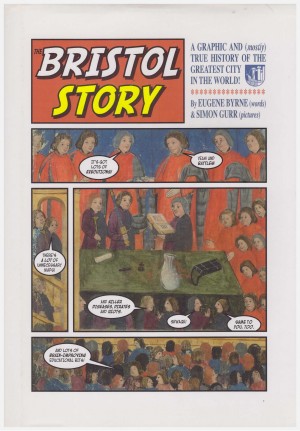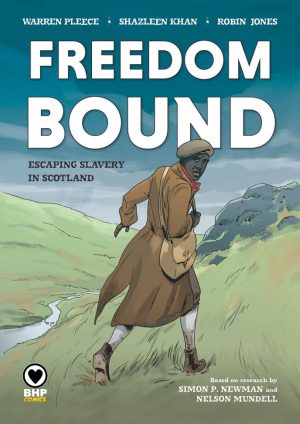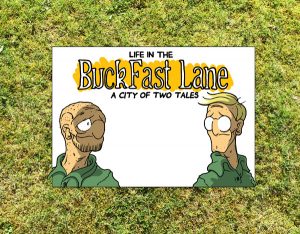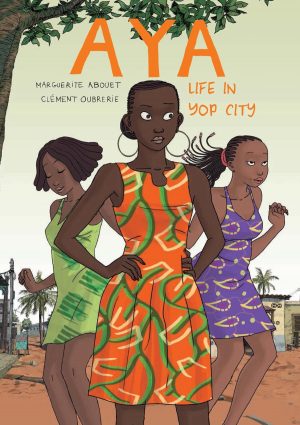Review by Frank Plowright
Globally the Scottish city of Dunfermline isn’t widely known, but then The Dunfermline Story presumably isn’t intended for a global audience. Sometimes a local presence is enough, and what better for school libraries in Fife than to have a graphic novel detailing the history of the region’s largest city. Plus, as publisher and writer Colin Maxwell knows, every place has plenty of surprising stories. Maxwell doesn’t reveal them all at once, though, as this is a chronological history, beginning in the 12th century.
Thoughtfully, as this is a regional book, it’s written to sound as if spoken in the regional accent, and in order not to be exclusive, an English translation is available here. Bearing the probable younger audience in mind, it’s provided in bite sized pieces never running over three pages, some of which include puzzles and the content illustrated by variety of artists. These range from known names and experienced professionals such as Mike Collins, Anna Morazova and surprisingly Vicente Alcazar, to promising local talents. The sample art pairs Stref (Steve White) with Gary Burley, the most frequent artistic contributor, and very few pages fall below the desired standard.
Although only recently raised to city status by royal decree, Dunfermline’s history is rich as an important place, although largely prior to the 1707 Act of Union uniting England and Scotland. Maxwell doesn’t just concentrate on those considered the great of their day, though, and an entertaining section concerns assorted inventors and entrepreneurs, some more inspired than others. James Blake learned the closely guarded secret of the mechanised loom weaving machine by telling entertaining stories to the weavers, while David Hatton’s thread spinning device powered by mice running in a wheel never caught on. Dunfermline’s most successful son was 19th century industrialist Andrew Carnegie, who made his fortune in the USA, but never forgot the country of his birth. His legacy is public buildings all over Scotland, but with a greater bequest to Dunfermline where a trust still operates in his name. Take a look at the webpage if interested.
There are places where connections are stretched, such as portraits of global music stars who once played the Kinema, and on the subject of music perhaps more space could have been devoted to Big Country and Nazareth’s achievements. On the other hand, Nige Parkinson adapting Stuart Adamson’s lyrics Beano-style is a real treat. It’s a shame Andrew Sawyer’s portraiture isn’t a strength, while Tom Crielly on the acts who’ve played Dunfermline is excellent.
A few quibbles aside, Dunfermline is served well by Maxwell and his contributors, and making it even more inclusive is running a competition among school children to have their strips about the city printed in the back. A graphic novel about Dunfermline is by its nature limiting the appeal, but it serves the city, its population and its great and good extremely well, and the compact treatment and colourful past are recommended to anyone with an interest in history.
As yet The Dunfermline Story isn’t available through online booksellers, so why no order direct from Maxwell here.
